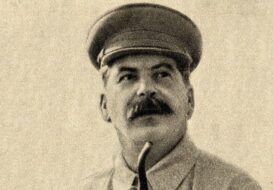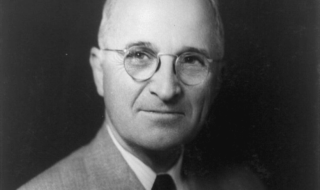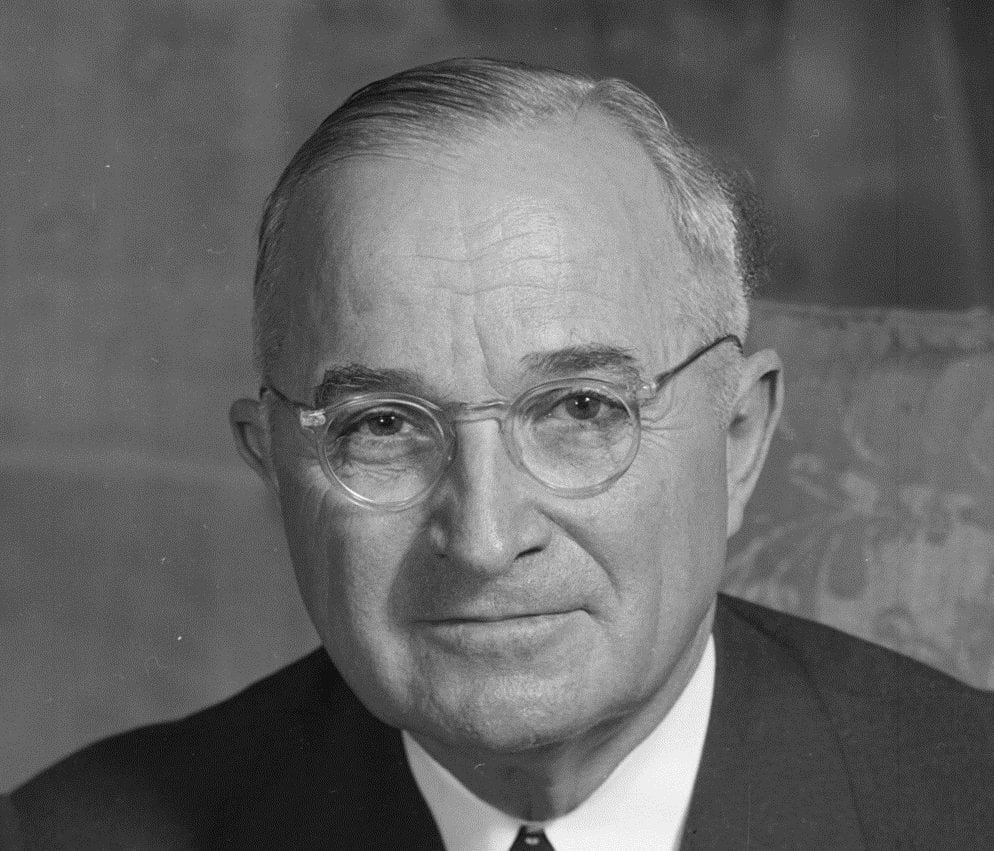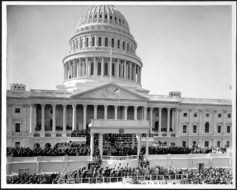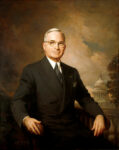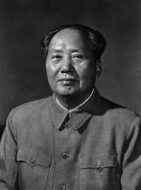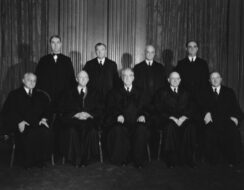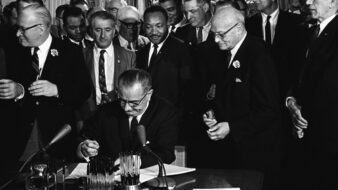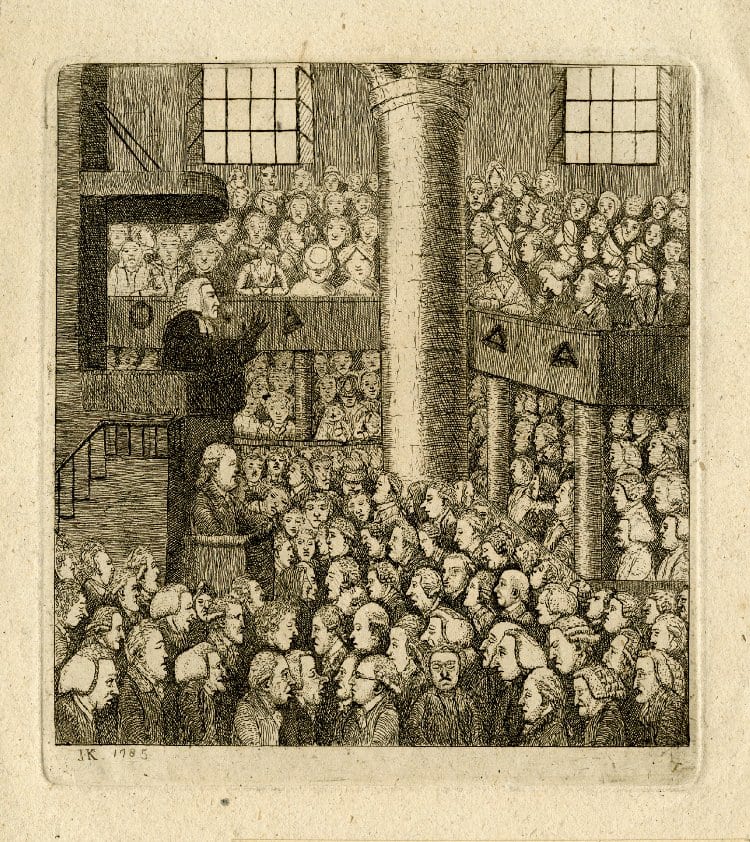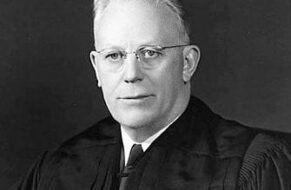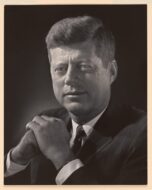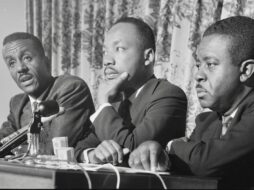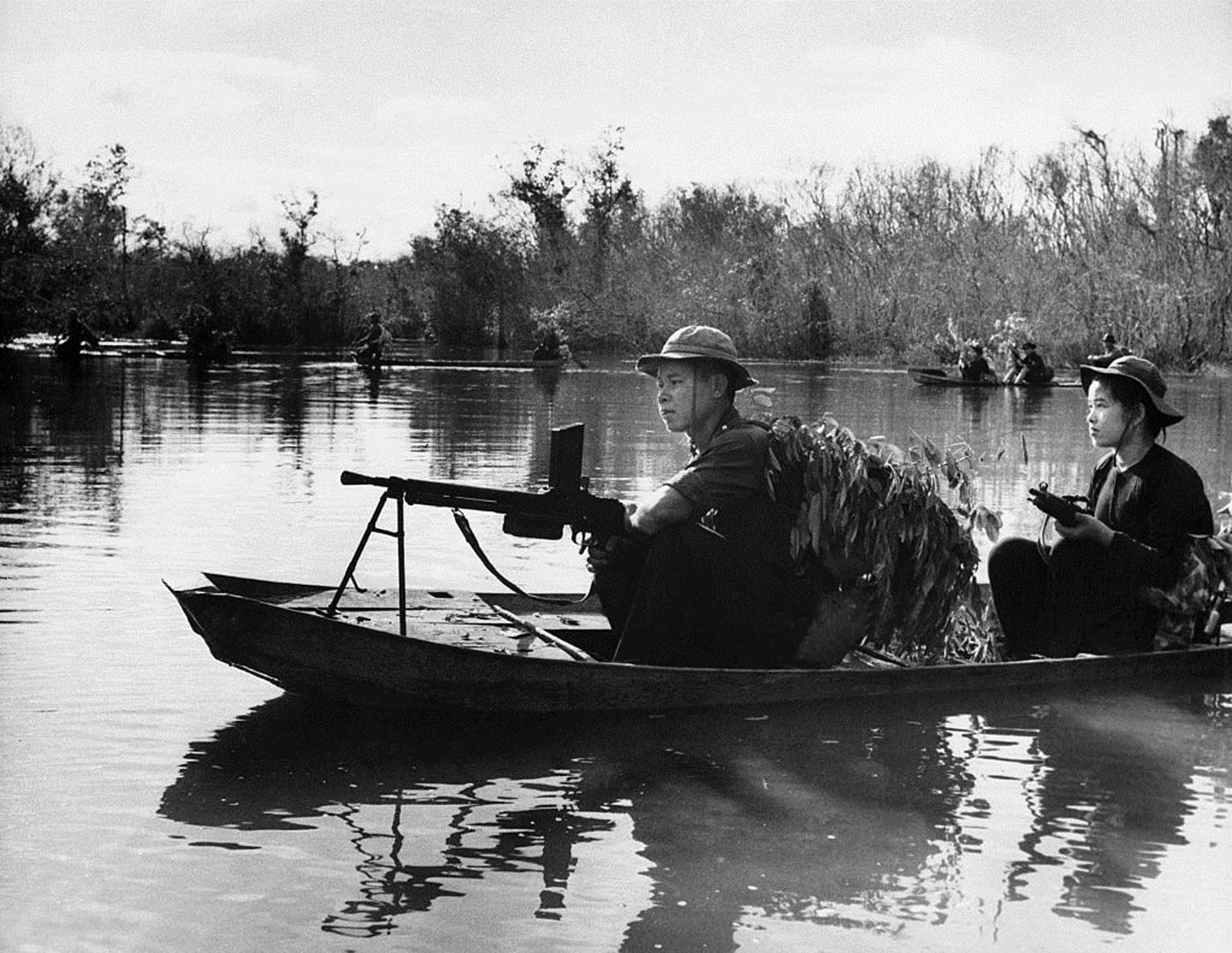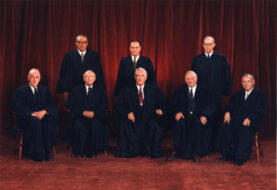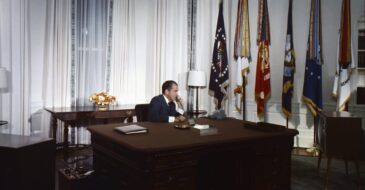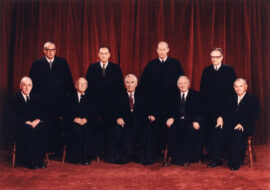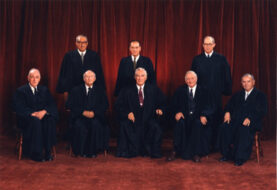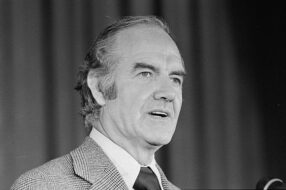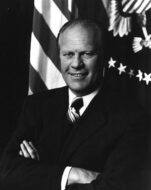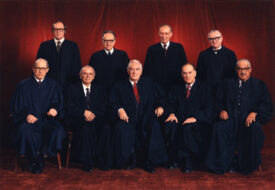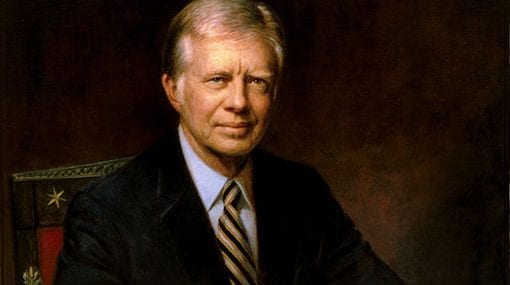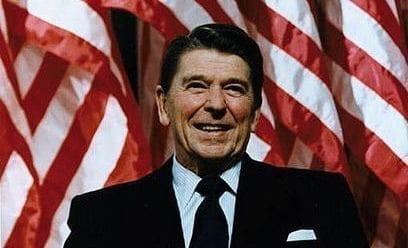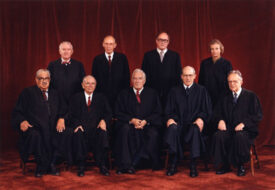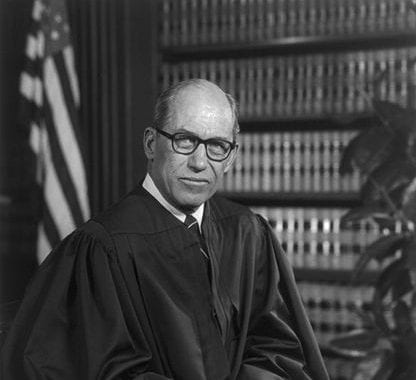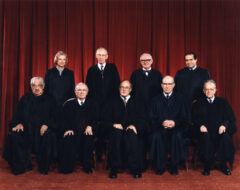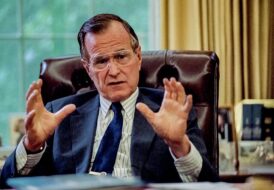
Introduction
The bureaucratic title of this document hides its extraordinary influence. Produced under the authority of the National Security Council, an advisory body created as part of the National Security Act of 1947, this policy paper helped to militarize containment and to drastically increase defense spending. The scope of the paper was ambitious and wide-ranging; some parts resembled a doctoral thesis more than a policy document. Its primary author was Paul Nitze, who replaced George Kennan as the head of the State Department’s Policy Planning Staff. Secretary of State Dean Acheson gave this assignment to Nitze in part because he favorably anticipated that Nitze would recommend a bold new approach to fighting the Cold War. Indeed, Nitze recommended that the United States swiftly marshal all of its resources to build up the political, economic, and military strength of itself and its allies in order to counter Soviet expansion. From the perspective of NSC 68, a more aggressive version of containment was necessary to overcome the perceived threat.
In June 1950, the North Korean attack on South Korea (See Truman and MacArthur) seemed to show the truth of Nitze’s analysis of the Soviet Union as aggressive and seeking world domination. Although the Soviet Union had not ordered the invasion, Truman and his top policymakers believed the Soviets were responsible and that they might order invasions elsewhere, especially in Western Europe. The Korean War delayed action on NSC 68 but also clinched its acceptance. When the president signed NSC 68 in September 1950, he indicated that it should be the foundation of U.S. national security for the next several years. Accordingly, defense spending rose. In the spring of 1950, the amount requested for military services was less than $13 billion; in 1951, that figure exceeded $60 billion.
Source: NSC 68, United States Objectives and Programs for National Security [Document 85], The Foreign Relations of the United States, 1950, National Security Affairs, Vol. I, Foreign Economic Policy (Washington, D.C.: U.S. Department of State, Office of the Historian, 1977). Available at https://goo.gl/VhnMN8
The following report is submitted in response to the President’s directive of January 31 which reads:
“That the President direct the Secretary of State and the Secretary of Defense to undertake a reexamination of our objectives in peace and war and of the effect of these objectives on our strategic plans, in the light of the probable fission bomb capability and possible thermonuclear bomb capability of the Soviet Union.”1 . . .
ANALYSIS
I. Background of the Present Crisis
Within the past thirty-five years the world has experienced two global wars of tremendous violence. It has witnessed two revolutions – the Russian and the Chinese – of extreme scope and intensity. It has also seen the collapse of five empires – the Ottoman, the Austro-Hungarian, German, Italian, and Japanese – and the drastic decline of two major imperial systems, the British and the French. During the span of one generation, the international distribution of power has been fundamentally altered. . . .
. . . [T]he Soviet Union . . . is animated by a new fanatic faith [communism], antithetical to our own, and seeks to impose its absolute authority over the rest of the world. Conflict has, therefore, become endemic and is waged, on the part of the Soviet Union, by violent or non-violent methods in accordance with the dictates of expediency. With the development of increasingly terrifying weapons of mass destruction, every individual faces the ever-present possibility of annihilation should the conflict enter the phase of total war. . . .
The issues that face us are momentous, involving the fulfillment or destruction not only of this Republic but of civilization itself. They are issues which will not await our deliberations. With conscience and resolution this Government and the people it represents must now take new and fateful decisions.
II. Fundamental Purpose of the United States
The fundamental purpose of the United States is laid down in the Preamble to the Constitution: “ . . . to form a more perfect Union, establish Justice, insure domestic Tranquility, provide for the common defence, promote the general Welfare, and secure the Blessings of Liberty to ourselves and our Posterity.” In essence, the fundamental purpose is to assure the integrity and vitality of our free society, which is founded upon the dignity and worth of the individual.
Three realities emerge as a consequence of this purpose: Our determination to maintain the essential elements of individual freedom, as set forth in the Constitution and Bill of Rights; our determination to create conditions under which our free and democratic system can live and prosper; and our determination to fight if necessary to defend our way of life, for which as in the Declaration of Independence, “with a firm reliance on the protection of Divine Providence, we mutually pledge to each other our lives, our Fortunes, and our sacred Honor.”
III. Fundamental Design of the Kremlin
The fundamental design of those who control the Soviet Union and the international communist movement is to retain and solidify their absolute power, first in the Soviet Union and second in the areas now under their control. In the minds of the Soviet leaders, however, achievement of this design requires the dynamic extension of their authority and the ultimate elimination of any effective opposition to their authority.
The design, therefore, calls for the complete subversion or forcible destruction of the machinery of government and structure of society in the countries of the non-Soviet world and their replacement by an apparatus and structure subservient to and controlled from the Kremlin. To that end Soviet efforts are now directed toward the domination of the Eurasian land mass. The United States, as the principal center of power in the non-Soviet world and the bulwark of opposition to Soviet expansion, is the principal enemy whose integrity and vitality must be subverted or destroyed by one means or another if the Kremlin is to achieve its fundamental design.
IV. The Underlying Conflict in the Realm of Ideas and Values between the U.S. Purpose and the Kremlin Design
A. Nature of Conflict
The Kremlin regards the United States as the only major threat to the achievement of its fundamental design. There is a basic conflict between the idea of freedom under a government of laws, and the idea of slavery under the grim oligarchy of the Kremlin, which has come to a crisis with the polarization of power described in Section I, and the exclusive possession of atomic weapons by the two protagonists. . . .
. . . Unwillingly our free society finds itself mortally challenged by the Soviet system. No other value system is so wholly irreconcilable with ours, so implacable in its purpose to destroy ours, so capable of turning to its own uses the most dangerous and divisive trends in our own society, no other so skillfully and powerfully evokes the elements of irrationality in human nature everywhere, and no other has the support of a great and growing center of military power.
B. Objectives
The objectives of a free society are determined by its fundamental values and by the necessity for maintaining the material environment in which they flourish. Logically and in fact, therefore, the Kremlin’s challenge to the United States is directed not only to our values but to our physical capacity to protect their environment. It is a challenge which encompasses both peace and war and our objectives in peace and war must take account of it. . . .
In a shrinking world, which now faces the threat of atomic warfare, it is not an adequate objective merely to seek to check the Kremlin design, for the absence of order among nations is becoming less and less tolerable. This fact imposes on us, in our own interests, the responsibility of world leadership. It demands that we make the attempt, and accept the risks inherent in it, to bring about order and justice by means consistent with the principles of freedom and democracy. . . .
C. Means
The free society is limited in its choice of means to achieve its ends.
. . . Resort to war is not only a last resort for a free society, but it is also an act which cannot definitively end the fundamental conflict in the realm of ideas. The idea of slavery can only be overcome by the timely and persistent demonstration of the superiority of the idea of freedom. Military victory alone would only partially and perhaps only temporarily affect the fundamental conflict, for although the ability of the Kremlin to threaten our security might be for a time destroyed, the resurgence of totalitarian forces and the re-establishment of the Soviet system or its equivalent would not be long delayed unless great progress were made in the fundamental conflict.
Practical and ideological considerations therefore both impel us to the conclusion that we have no choice but to demonstrate the superiority of the idea of freedom by its constructive application, and to attempt to change the world situation by means short of war in such a way as to frustrate the Kremlin design and hasten the decay of the Soviet system.
For us the role of military power is to serve the national purpose by deterring an attack upon us while we seek by other means to create an environment in which our free society can flourish, and by fighting, if necessary, to defend the integrity and vitality of our free society and to defeat any aggressor. The Kremlin uses Soviet military power to back up and serve the Kremlin design. It does not hesitate to use military force aggressively if that course is expedient in the achievement of its design. The differences between our fundamental purpose and the Kremlin design, therefore, are reflected in our respective attitudes toward and use of military force.
Our free society, confronted by a threat to its basic values, naturally will take such action, including the use of military force, as may be required to protect those values. . . .
. . . Our aim in applying force must be to compel the acceptance of terms consistent with our objectives, and our capabilities for the application of force should, therefore, within the limits of what we can sustain over the long pull, be congruent to the range of tasks which we may encounter.
V. Soviet Intentions and Capabilities
A. Political and Psychological
The Kremlin’s design for world domination begins at home. The first concern of a despotic oligarchy is that the local base of its power and authority be secure. . . .
Being a totalitarian dictatorship, the Kremlin’s objective in these policies is the total subjective submission of the peoples now under its control. . . .
The Kremlin’s policy toward areas not under its control is the elimination of resistance to its will and the extension of its influence and control. It is driven to follow this policy because it cannot . . . tolerate the existence of free societies; to the Kremlin the most mild and inoffensive free society is an affront, a challenge and a subversive influence. . . .
With particular reference to the United States, the Kremlin’s strategic and tactical policy is affected by its estimate that we are not only the greatest immediate obstacle which stands between it and world domination, we are also the only power which could release forces in the free and Soviet worlds which could destroy it. The Kremlin’s policy toward us is consequently animated by a peculiarly virulent blend of hatred and fear. . . .
B. Economic
The Kremlin has no economic intentions unrelated to its overall policies. Economics in the Soviet world is not an end in itself. The Kremlin’s policy, in so far as it has to do with economics, is to utilize economic processes to contribute to the overall strength, particularly the war-making capacity of the Soviet system. The material welfare of the totalitariat2 is severely subordinated to the interest of the system. . . .
C. Military
The Soviet Union is developing the military capacity to support its design for world domination. The Soviet Union actually possesses armed forces far in excess of those necessary to defend its national territory. These armed forces are probably not yet considered by the Soviet Union to be sufficient to initiate a war which would involve the United States. This excessive strength, coupled now with an atomic capability, provides the Soviet Union with great coercive power for use in time of peace in furtherance of its objectives and serves as a deterrent to the victims of its aggression from taking any action in opposition to its tactics which would risk war.
Should a major war occur in 1950 the Soviet Union and its satellites are considered by the Joint Chiefs of Staff to be in a sufficiently advanced state of preparation immediately to undertake and carry out the following campaigns.
- To overrun Western Europe, with the possible exception of the Iberian and Scandinavian Peninsulas; to drive toward the oil-bearing areas of the Near and Middle East; and to consolidate Communist gains in the Far East;
- To launch air attacks against the British Isles and air and sea attacks against the lines of communications of the Western Powers in the Atlantic and the Pacific;
- To attack selected targets with atomic weapons, now including the likelihood of such attacks against targets in Alaska, Canada, and the United States. Alternatively, this capability, coupled with other actions open to the Soviet Union, might deny the United Kingdom as an effective base of operations for allied forces. It also should be possible for the Soviet Union to prevent any allied “Normandy” type amphibious operations intended to force a reentry into the continent of Europe. . . .
VI. U.S. Intentions and Capabilities – Actual and Potential
A. Political and Psychological
. . . In “containment” it is desirable to exert pressure in a fashion which will avoid so far as possible directly challenging Soviet prestige, to keep open the possibility for the U.S.S.R. to retreat before pressure with a minimum loss of face and to secure political advantage from the failure of the Kremlin to yield or take advantage of the opening we leave it.
We have failed to implement adequately these two fundamental aspects of “containment.” In the face of obviously mounting Soviet military strength ours has declined relatively. Partly as a byproduct of this, but also for other reasons, we now find ourselves at a diplomatic impasse with the Soviet Union, with the Kremlin growing bolder, with both of us holding on grimly to what we have and with ourselves facing difficult decisions. . . .
- 1. A fission bomb, also known as an atomic bomb, was the type used against Japan in 1945. Thermonuclear or hydrogen bombs are much more powerful than atomic weapons. The United States first tested a hydrogen bomb in 1952; the Soviet Union, in 1953.
- 2. A play on the Marxist term “proletariat” (the lowest class of workers within a capitalist economy), “totalitariat” means those living within the totalitarian system of the Soviet Union.

Conversation-based seminars for collegial PD, one-day and multi-day seminars, graduate credit seminars (MA degree), online and in-person.




